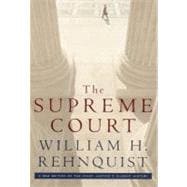Supreme Court : A new edition of the Chief Justice's classic History

Supreme Court : A new edition of the Chief Justice's classic History
- ISBN 13:
9780375409431
- ISBN 10:
0375409432
- Edition: Revised
- Format: Hardcover
- Copyright: 02/06/2001
- Publisher: Knopf
- Newer Edition
Rent
Sorry, this item is currently unavailable on Knetbooks.com




